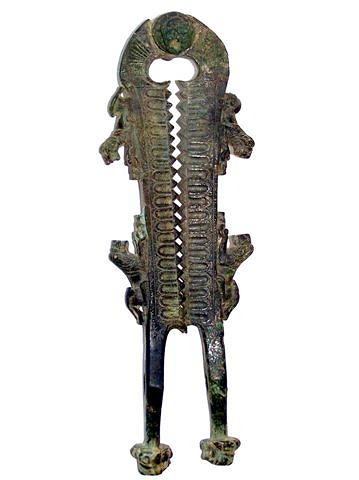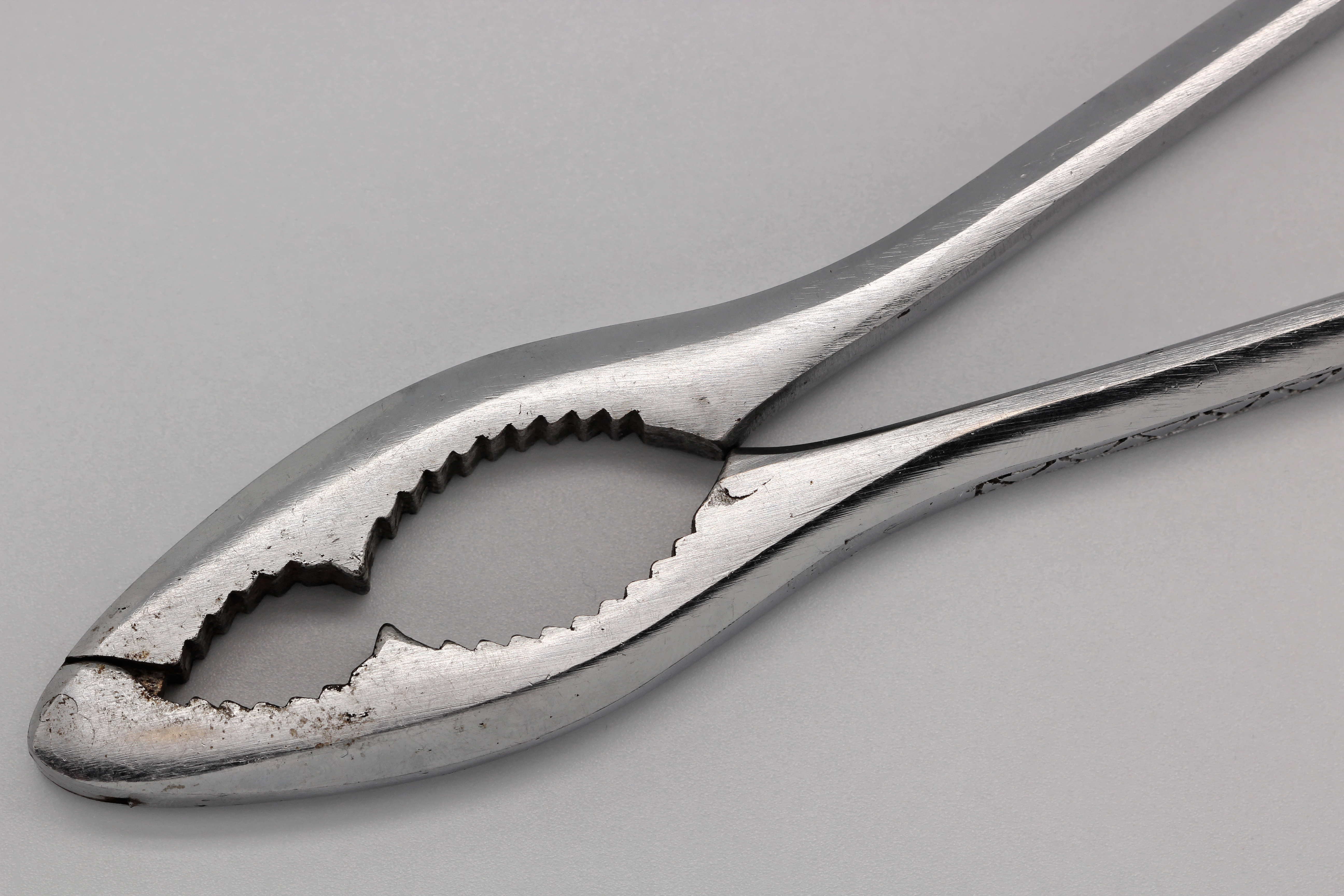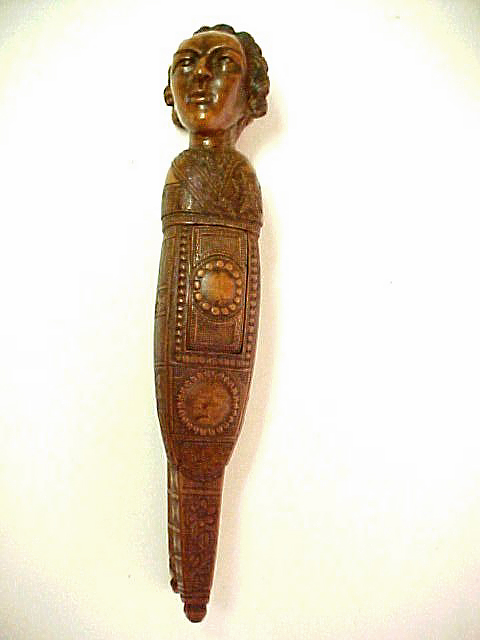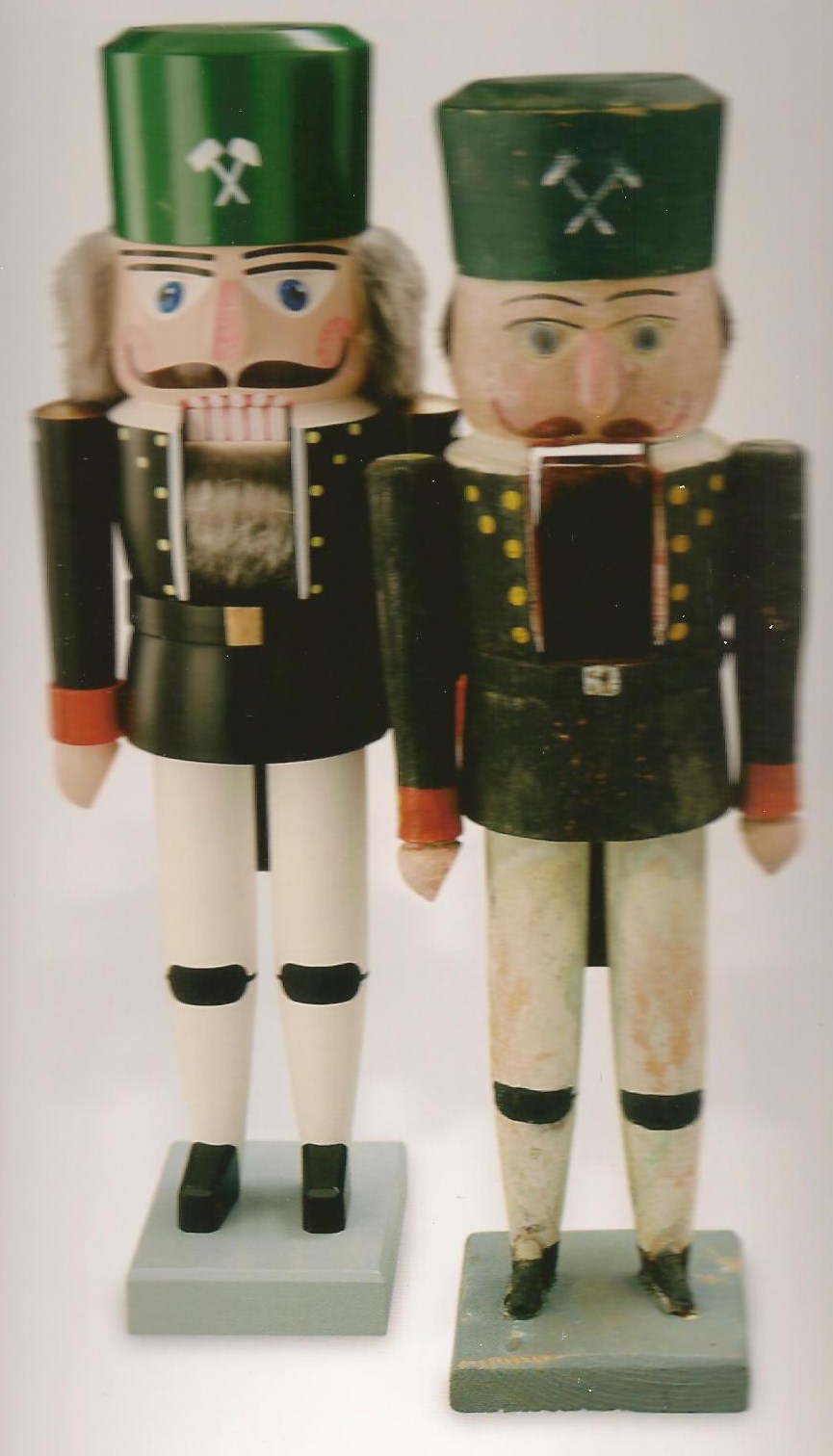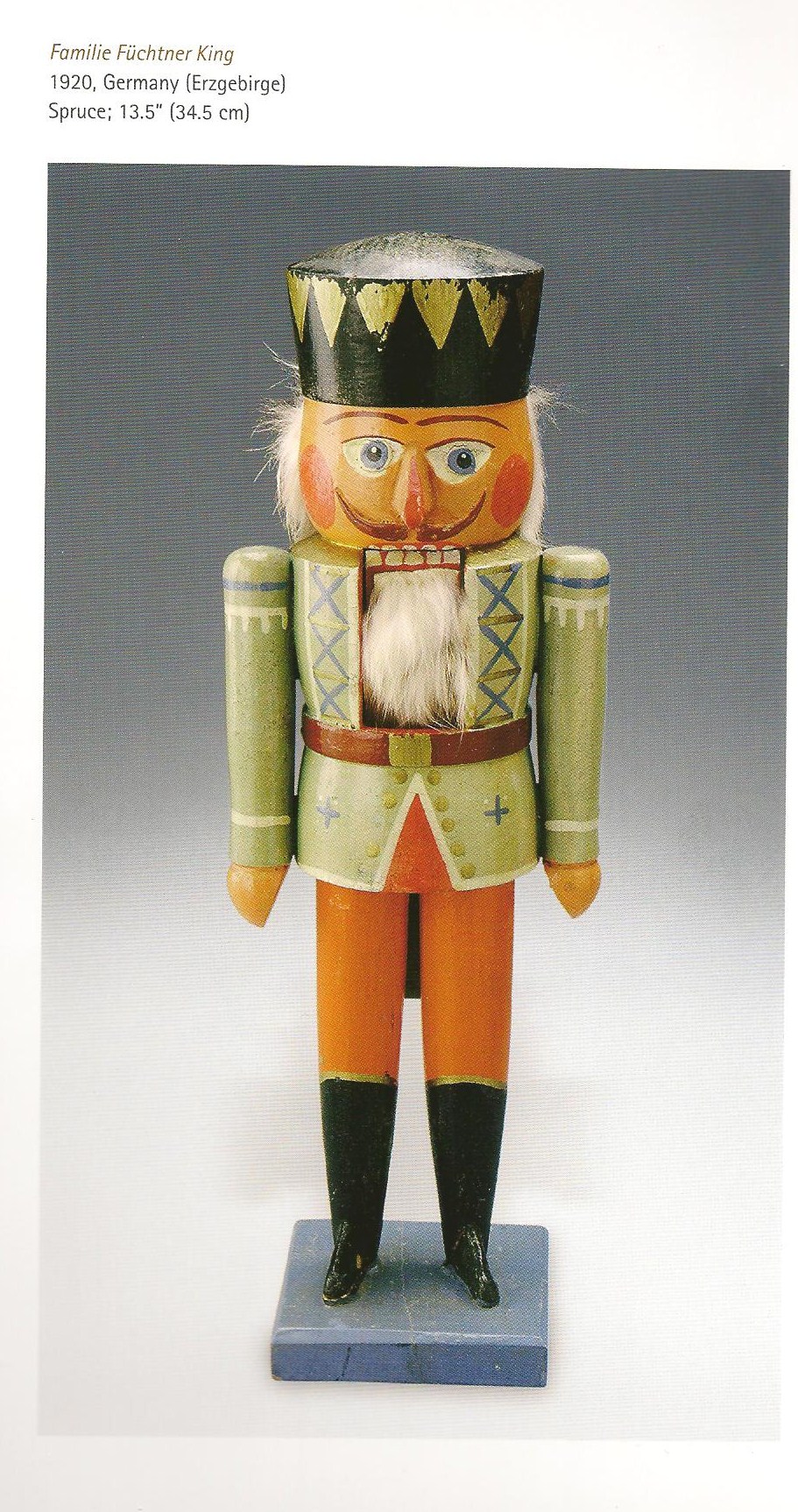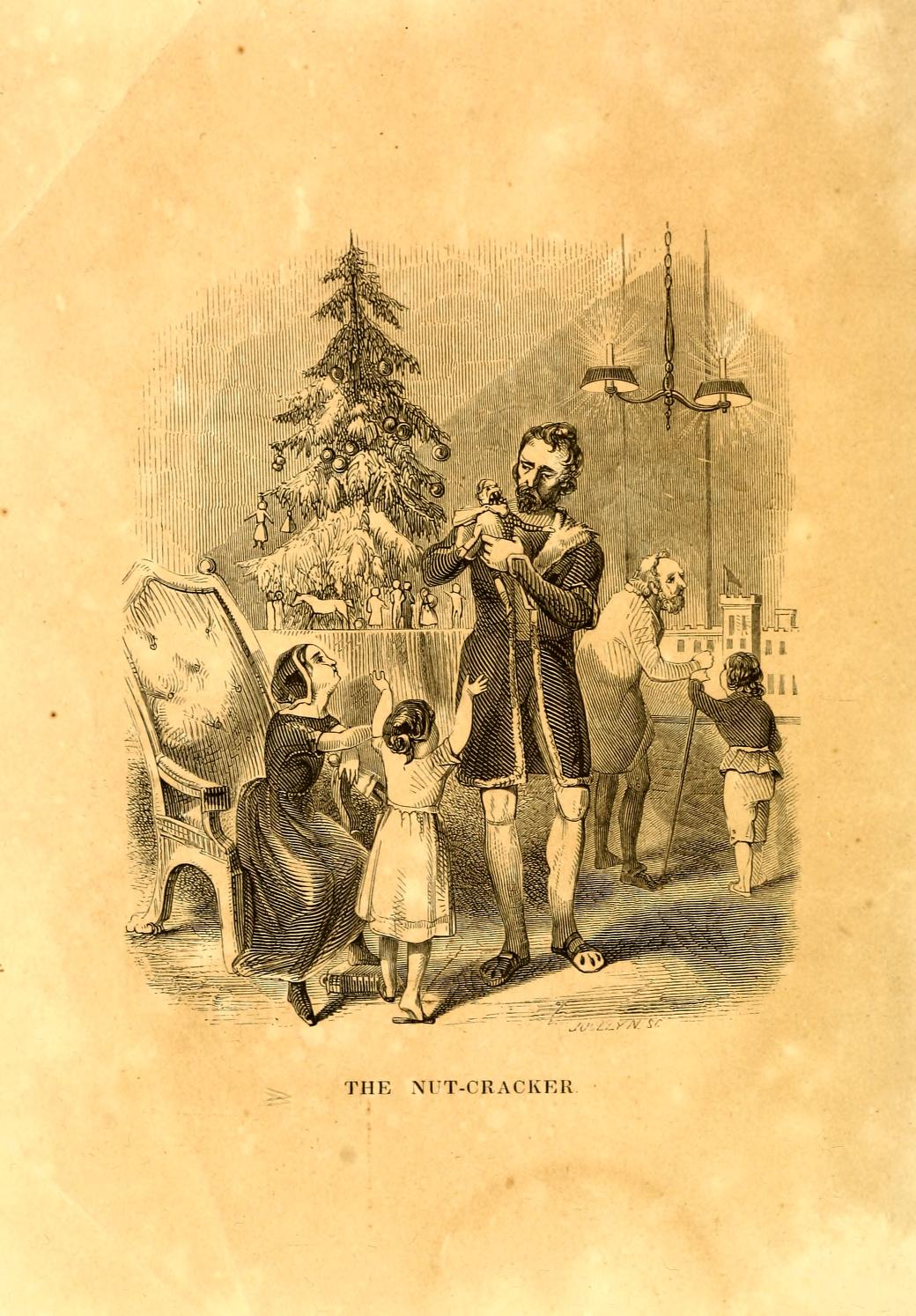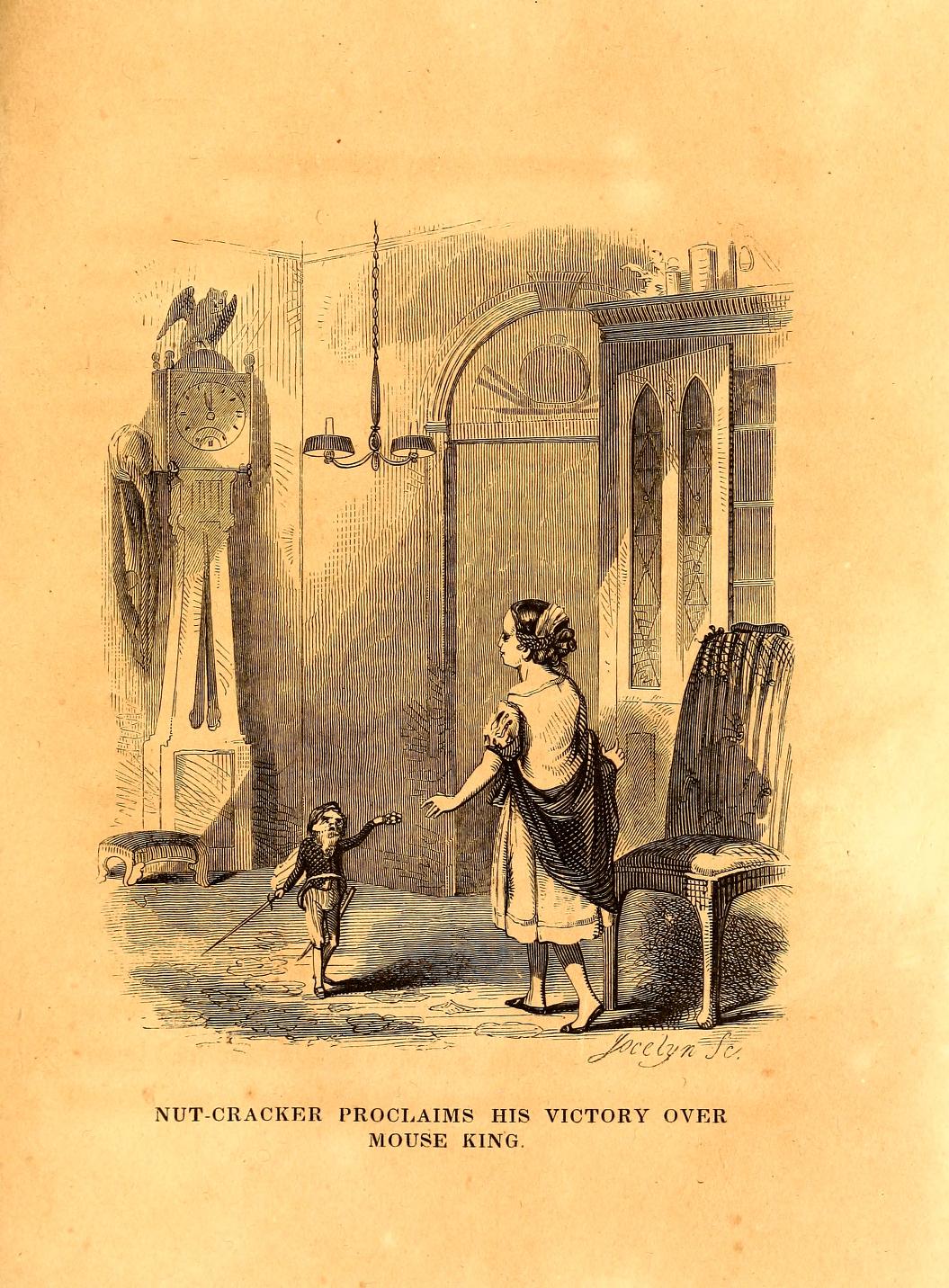Nutcrackers History: A Unique History of Nutcrackers Featuring the "In A Nutshell" Infographic
The history of nutcrackers extends as far back as when humans were cracking and eating nuts, and will continue on into the future for as long as people continue to enjoy nature's shelled protein and healthy fat source. Here's the breakdown.
What You'll Learn
- The different time periods and cultures of nutcrackers throughout history.
- The original Nutcracker story - it's not what you think! (unless you already know it ;^)
- How a French art form, flourishing in Russia, adapted a German folk story - and how it took over America!
- The Nutcracker Ballet - why is it so popular and what does it have to do with Christmas?
- How Nutcracker culture has spread and continues to grow worldwide.
If you ended up here and you're looking to shop for ballet gifts, voila!!
You can skip ahead to the "In a Nutshell" Infographic if you'd like! But we hope you enjoy this whole page and share it wherever you like.
Primitive Nutcrackers: Stones With Dimples
The earliest known tools humans used for cracking nuts were stones that had a little dimple in them. These stones are called "cup stones", "pit stones", "pitted stones", "nutting stones" or a half-dozen other names people have given them over the centuries.
Although some consider it to be a mystery what those stones were used for, and we don't claim to know all their uses, we can imagine that if you pick up a rock and hit a walnut on a flat surface, the nut could go flying left or right or otherwise slip away from your rock's crushing blow.
But if you use a stone shaped like a cup, you can sit the walnut in so it will stay put and get smashed open, leaving the meat of the nut for you and your companions to devour.
The Leavenworth Nutcracker Museum has in their collection pitted stones dating to the Archaic Period 4,000 to 8,000 years ago, have been found in excavations in North America and Europe. Native peoples would camp around nut trees before harvest time and wait for the nuts to fall so they could eat them, either whole or ground up.
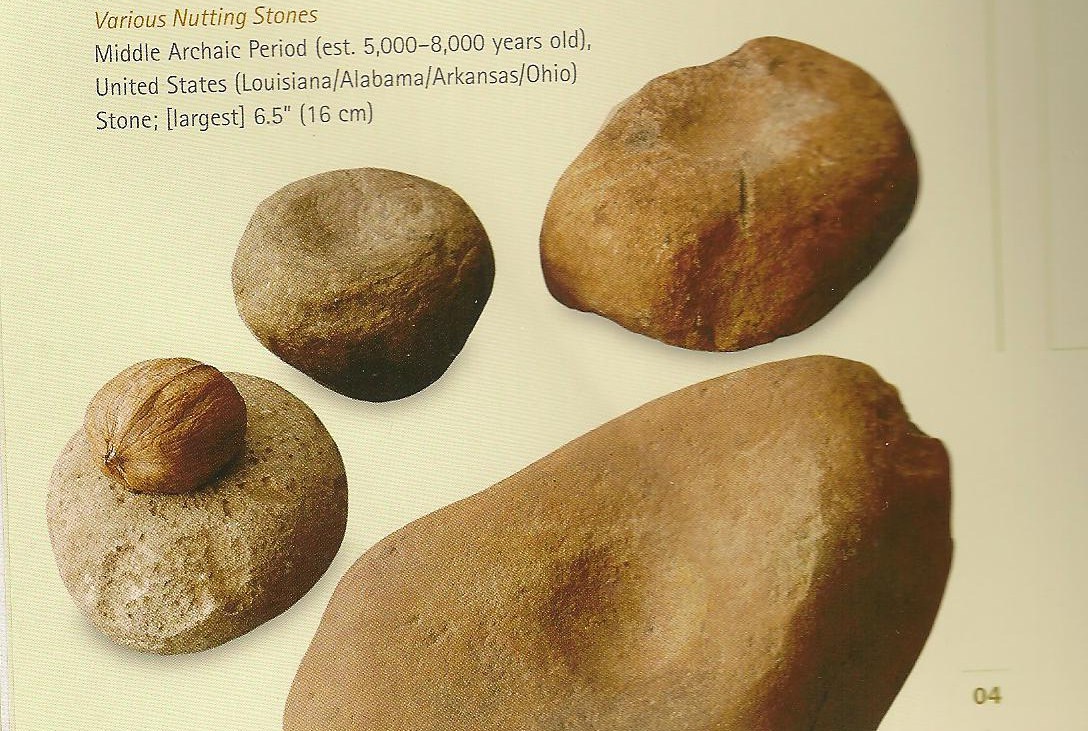
Image of nutting stones from Wagner (2005) courtesy the Leavenworth Nutcracker Museum.
Roman Nutcrackers
The ability to work with metal resulted in a big step forward in civilized society, and in the production of nutcrackers.
The oldest metal nutcracker archived in public collections is a bronze Roman functional nutcracker dating back to the 3rd or 4th Century B.C.
This nutcracker takes the form of two hands, which may reflect the Roman concept of . In the age of Titans and Heroes, the symbol of being able to smash open a nut with one's hands might haave brought a feeling of satisfaction. Either way, nice nuctacker! See all the detail in the wrist bands?
This nutcracker is on display at the MARTA museum in Tarento, Italy. Image courtesy Arlene Wagner, Leavenworth Nutcracker Museum.
Another old Roman nutcracker is a bronze piece that dates between 200 B.C. and 200 A.D. It was found in an excavation in 1960, only 55 years ago.
Image of the a bronze Roman nutcracker circa 200 B.C., courtesy of the Leavenworth Nutcracker Museum (www.nutcrackermuseum.com)
The design of this nutcracker looks a lot like our modern day hand-held nutcrackers:
"Casse-noix inox 03" by Coyau / Wikimedia Commons.
showing one example of how history can repeat itself, even for nutcrackers.
From Bronze to Iron and Brass
If you look at the design of the Roman nutcracker shown above, you'll see it has a hinge at the top and teeth in the middle between the hinge and where someone would squeeze the nutcracker.
The iron lever nutcrackers made in France around the 13th century were different.
These nutcrackers had a hinge in the middle, between where someone would hold the lever's handle and on the other side where they put the nut to be cracked.
Placing the hinge (called a "fulcrum") of the lever in the middle allowed for a powerful nut cracking mechanism, and it lent itself to designing nutcrackers in the likeness of animals, who would obediently crack nuts in their mouths.
Brass nutcrackers were known to have been developed in the 14th and 15th centeries, and around that time a big advancement in metal work took place:
People learned to melt metal and pour it into molds of any shape. No longer needing to sculpt metal statues by hand sped up the process and allowed mass production of metal figurines. The brass production of England in particular became widely known, and the United States distributed its "cast iron" products far and wide.
Meanwhile in the 15th through 18th Centuries
Aside with the advances in metal nutcrackers, wood carving had come a long way from two pieces of wood strapped together. Now boxwood or other local wood was used as stock for English and French carvers to craft intricate nutcrackers. Here are some featured at museums around the world:
18th century lever nutcracker from the Alsace region of France - image courtesy the Leavenworth Nutcracker Museum
Carvers in Austria, Switzerland, Northern Italy and Germany developed new wooden nutcracker designs in the likeness of animals and people, and by the 19th century, the stage was set for German nutcrackers to take the spotlight.
German Nutcrackers
The word "nussknacker" showed up in the Brothers Grimm dictionary in 1830, following nutcracker figures appearing in the form of soldiers and kings in the Sonneberg and Erzgebirge regions of Germany.
According to Christmas Treasures, Inc (3), Wilhelm Friedrich Füchtner (1844 - 1923), the "father of the nutcracker" who lived in the Erzgebirge or "Ore mountains," launched the first commercial line of nutcrackers.
"Erz" means ore and "birge" means mountains (4).
The people of the Erzgebirge region were miners primarily, but the presence of the (name of the) river allowed them to operate lathes.
Wilhelm Füchtner was born August 23, 1844 in Seiffen, Germany to a family of carpenters (3).
The Füchtners produced models of Nutcracker, Smoker, Miner, and Angel wooden toys, which became prototypes of the standard traditional items today.
If one considers the annual work cycle of a carpenter, it makes sense why these special toys focus around the Christmas season.
Most carpentry work, on houses and buildings, is done in warmer weather, or at least when it's not freezing outside. During the winter months, carpenters would be out of a job, unless they could set up shop indoors and find a way to make money with what they produced in the shop.
Which is exactly what the Füchtner family did.
For example, Gottheif Friedrich Füchtner lived from 1766 to 1844 and had sold Seiffen toys on the "Striezelmarkt" in Dresden since 1809. Their sixth generation family business, headed by Volkner Füchtner, still produces the "Seiffen Nutckracker" and other fine German folk art figurines and toys.
Fuchtner Family Soldier Nutcracker, Nutcracker Miners, and Nutcracker King. Images courtesy the Leavenworth Nutcracker Museum.
Style, symbolism, and artistry
Nutcrackers were considered good luck charms that someone could bring home to their household to as a guard against from evil spirits.
Not only did the fierce expression and strong teeth ward off danger, but they also had a political symbolism:
The German nutrackers were in the form of kings, police, and soldiers--authority figures.
Just as the Roman metal nutcrackers, in the form of hands able to crack nuts, were a symbol of personal power, these German nutcrackers were empowering to the people as well.
Political leadership in Germany had taken the form of Confederations with Kings and later Emperors, who tended to rule with great authority.
Being able to take a doll who looked like an authority figure, and crush nuts in its mouth must have been provided fun and amusement for an otherwise fairly oppressed people. In sympathy with this spirit, a characture of Napoleon called "The Parisian Nutcracker" (part-way down the page) appeared in 1813 after Napoleon's defeat in Leipzig.
Nutcracker and Mouse King: The Tale Behind it All
Nutcracker and Mouse King or simply Nutcracker written in 1816 by E.T.A. Hoffmann (2). is the story of Marie Stahlbaum and her brother Fritz, and what happens when their Godfather Drosselmeyer, a judge, gives them a very special gift one Christmas.
Marie and Fritz and their sister Louise receive a misshapen little wooden soldier that can crack nuts by means of a lever in his back.
Image from (10)
Fritz (or "Fred") puts some of the biggest nuts in the nuctacracker's mouth, and a few of its little teeth fall out.
Marie tries to keep the nutcracker, calling Fritz a brute and calling attention to how shoddily he treats his other toys.
Their parents and Godfather Drosselmeyer come over and side with Fritz, although their father, Dr. Stahlbaum, makes Fritz ashamed by saying: "You know better than to request active duty of an injured soldier." (Hoffmann, 1984, paraphrase)
Marie takes Nutcracker and cares for it.
Later that evening, after the grandfather clock whirrred twelve times, she is distraught to see the room full of beady little eyes that glow like lights.
Mouse soldiers. And their leader was a big king with seven heads! Each of the seven heads had a crown on it.
However, the mice weren't the only things up in the night.
Nutcracker jumps out of the cupboard to join the fight, and calls his fellow soldiers to ply their trade.
A beautiful doll named Clara puts herself in the way so he falls on her, instead of to the ground.
Clara asks Nutcracker not to fight, but he insists he must.
Clara would put a cloth of hers over his shoulders, but instead Nutcracker draws sattention to a ribbon given to him by Marie.
In the battle, the mice are overtaking Nutcracker and his soldiers. Marie, not knowing what to do, throws her shoe into the midst of the chaos.
The shoe kills the mouse king, and the surviving mice scatter.
Nutcracker visits Marie and takes her on a magical journey to many fantastic, wondrous places (including the Land of Sweets--pass the marazipan!). He declares his love for Marie, and she to him.
She wakes up in her bed--of course having been brought there by her sweet magical companions.
Marie reports these events to her parents and to Judge Drosselmeyer, who declare the girl full of nonsense.
However, Uncle Drosselmeyer visits the family for three consecutive evenings, and tells them a story in three parts.
Image from (10)
"The Story of the Hard Nut" explains the expression "A hard nut to crack" and gives the background of why Nutcracker and the mice are fighting in the first place. You can read an early (1853) English translation of it by "Mrs. St. Simon"
here (flip to the beginning for the whole
Nutcracker and Mouse King novel--all quotes below are from this version unless otherwise stated, though I use the name "Marie" instead of "Maria" as the 1853 version did).
It is the story of Princess Pirlipat, whose mother the Queen made a grievous error. She allowed Madame Mouserinks, the Queen of the mice, to eat the fat (and feed it to here mouse-Prince children) from the pork sausage Pirlipat's father the King had declared to be served at a feast--at the advice of his astrologer who had noticed it was an auspicious time for pork butchering.
When the king ate the fatless meat, he began to cry. He then became angry and told his court inventor, named
Christian Elias Drosselmeyer, to make mousetraps, which killed the Mouse Princes. So Madame Mouserinks, grieving her sons' deaths, put a curse on Princess Pirlipat, making her a sickly monster, with green bug-eyes and lips stretching from ear to ear.
It was Hatfields and McCoys between mice and Drosselmeyers from there, especially because the King blamed Drosselmeyer for the Princess' condition and threatened to execute him if he didn't find a cure.
After seeing how the only thing that would calm the distraught princess was eating nuts, Drosselmeyer discovered that Princess Pirlipat could be cured--in a very specific way:
For mysterious reasous, the "hard nut must be cracked with the teeth before the princess, by a man who had never been shaved, and had never worn boots. The young man must then hand her the kernel with closed eyes, and he must not open them again until he had marched seven steps backward without stumbling."
Sounds simple enough, right? ;), but alas, they needed to find the nut and the man, before counting themselves saved from the wrath of the King.
On a journey they went, the mechanist and his friend the astrologer. They traveled far and wide in search for the nut Crackatuck.
Eventually, in Asia, their sprits fell and Drosselmeyer became despondent, crying for Nuremberg, a German city he had never visited but heard there were "so many beautiful houses with windows."
Once in Nuremburg, they came upon Drosselmeyer's brother, Christian Zacharias Drosselmeyer, "
puppet-maker, varnisher, and guilder." To the relief and happiness of all, he just so happened to have a nut Crakatuck.
The astronomer confirmed not only the nut Crakatuck's authenticity, but also that they had found the young man to crack it: Drosselmeyer's brother's son. They would attach a "stout wooden queue" to his jaw, allowing him to crack nuts with greater force. And, after successfully cracking the nut, he would marry the princess.
Away they went, back to the palace with young Drosselmeyer. By then, the Princess' head was horribly misshapen and overgrown, so her body could not support its weight, and she had grown a white beard, all the way around her mouth and over her chin.
When young Drosselmeyer had cracked the nut and handed it to the Princess, she ate the kernel and was immediately restored to her former beauty.
Image from (10)
However, on his seventh step backward, he stepped on Madame Mouserinks, Queen of the Mice, and young Drosselmeyer was then turned into the very figure of the Princess while she was deformed. His head was overgrown, with buggy eyes and a stretched-out mouth, and down his back ran a narrow wooden cloak, with which he moved his hower jaw.
The Mouse Queen, while writhing before she died in agony, cursed the Nutcracker (which young Drosselmeyer now was), saying her sons with seven crowns would bite.
But the astronomer took another look and saw a positive note in young Drosselmeyer's future: he would "conduct himself so well in his new station" that after he had defeated the Mouse King with his seven crowns, and a maiden had loved him "notwithstanding his ugly shape"--he would become a Prince and a King, and regain his former beauty as a young man.
But for Marie, having heard the revelation of this story, knows something more: Nutcracker's kingdom is at stake. She is still recovering from having been cut with broken glass the night of the fight, and then something unimaginable happens:
The Mouse King visits her, and threatens to bite Nutracker if she does not give him her sugar plums. She agrees, and the next morning, her mother notices mice had visited.
The following evening, Mouse King threatens to bite Nutcracker if Marie does not surrender her chocolate puppet figures. Again she pays the ransom.
Dr. and Mrs. Stahlbaum and Godfather Drosselmeyer collaborate to catch the mouse, but no such luck.
When the Mouse King visits Marie at night and demands her picture-books, she realizes he will continue to ask until she is depleted.
Finally Nutcracker comes to life and asks her for a sword, with which she furnishes him thanks to the help of Fritz and who takes the sword of one of his retired Colonels.
Nutcracker emerges victorious over the Mouse King.
Image from (10)
Nutcracker then takes Marie on a magical journey to the
Puppet Kingdom, including the wondrous Christmas Wood, Lemonate River, Ograde Lake, Gingerbreadville (on the Molasses River), Bonbon Town, and finally, the Capital, where Nutcracker is greeted as a Prince, he introduces Marie to everyone, and they enjoy many delightful scenes, until . . .
Marie wakes up. She tells her parents and uncle about what happened, and again they don't believe her.
But Judge Drosselmeyer announces that his young nephew has now arrived, from Nuremberg of all places, and it is soon clear that she is Marie's nutcracker.
They are engaged and a year and a day later he returns, takes her away "in a golden chariot, drawn by silver horses,"
"There danced at the wedding two-and-twenty thousand of the most splendid figures, adorned with pearls and diamonds," and Marie is Queen in a most beautiful land where "the most beautiful, wonderful things can be seen by those who will only have eyes for them." (10)
Nutcrackers Come to America: The Popularity of Nutcracker Decorations in the United States
American Functional Nutcrackers had been in development as well--for example the model developed in 1871 by Henry Marcus Quackenbush has sold close to 200 million units worldwide (5).
After World War II, soldiers from the United States returned home with German nutcrackers as souvenirs for their sweethearts and families.
The "baby boom" generation--people born in the generation following 1946 once the American soldiers returned and settled back home--grew up with decorative German nutcrackers in their homes.
The popularity of German traditional nutcrackers in the America was cemented by two other cultural factors:
1. The industrial age was in full swing: No longer did people need to crack nuts by hand; they could purchase them already shelled by huge mass-processing factories.
With the help of modern factories, Nutcracker ornaments like these could be produced in larger quantity while maintaining consistent quality.
2. The success of the Nutcracker Ballet.
Rise of The Nutcracker Ballet
Pyotr Llyich Tchaikovsky wrote the score for this two-act ballet, with choreography by Marius Petipa and Lev Ivanov.
The "libretto" or narrative (story) was adapted from The Nutcracker and the Mouse King by E.T.A. Hoffmann.
The first production, performed in 1892 at the Mariinsky Theatre in St. Petersburg, Russia, was criticized for not being faithful to the original Hoffmann story.
However, the 20-minute suite by Tchaikovsky became popular worldwide. For example, the Disney film Fantasia (1940) features the music of the Nutcracker Suite.
The full ballet also continued to grow. It set down roots in America when the San Francisco Ballet performed it on December 24, 1944, under the artistic direction of William Christensen, with ballerina Gisella Caccialanza starring as the Sugar Plum Fairy.
The San Francisco production became an instant hit and holiday tradition.
The New York City Ballet followed suit in 1954 when it presented George Balanchine's staging of the complete ballet and made it an annual Christmas tradition, which spread to the entire United States.
Although there was considerable variation in how similar the productions were to the E.T.A. Hoffmann story, the nutcrackers became a household name.
Although Sendak passed away in 2012, his work is immortalized through memories of the play and print copies of his myriads of well-loved children's books, including his illustrated Nutcracker, with a new translation by eminent German translator Ralph Manheim (2).
History of Nutcrackers Infographic:
Here it is. A never-before seen depiction of all that went down from the first percussive rock smash, to the age of Nutcrackers.

Current Nutcracker Happenings
Today nutcrackers are popular and thriving as cultural icons worldwide. The Leavenworth Nutcracker Museum in Leavenworth, Washington, was founded in 1995 and currently houses over 6,000 nutcrackers. It is located above museum owners Arlene and George Wagner's shop Nutcracker Haus.
Popular Culture
In 2008, the United States Postal Service issued four stamps bearing the images of nutcrackers:

(7).
Proving that nutcrackers are still a big deal, Arlene Wager of the Leavenworth Nutcracker Museum was the first guest on late night host Conan O'Brien's new TBS show in November 2010.
Mrs. Wagner was accompanied by a human-sized nutcracker.
In other current happenings, we here at Nutcracker Ballet Gifts have been hard at work to put up this new website with all kinds of nutty resources and modern Nutcracker designs.
Do Nutcrackers Still Crack Nuts?
A fun and educational article in "The Plate" by National Geographic provides evidence that functional nutcracker figurines are difficult to find nowadays, and that there is one available at the Leavenworth Nutcracker Museum, but not online.
The author of the article searched high and low and could not find a traditional nutcracker that cracked nuts, per his son's request. But when he called the Leavenworth Nutcracker Museum, he found one, which he bought sight unseen and put the search to rest.
Do our
Nutcrackers crack nuts? Well, yes and no. Depending on the size, yes our Nutcracker Ballet Gifts nutcrackers could technically crack nuts. But the nutcrackers are painted, and I don't think you'd want to mess up the paint or get paint in a nut that you were really going to eat. So we'd recommend just suring our nutcrackers for decoration.
Plus, remember the "Story of the Hard Nut" we read a few minutes ago? The Nutcracker is a prince again! He doesn't need to go back to that old lifestyle ッ.
The Future of Nutcrackers
Jennifer Fisher, in her 2003 book Nutcracker Nation, shows how a Russian ballet (with a libretto written by a French ballet master!) brought a German fairy tale to life in the United States of America. In the American spirit of expoloration and innovation, new nutcracker models are contstantly being designed. With options for manufacturing in the Far East, and increased access to German nutcracker companies since the fall of the Berlin Wall in 1989, the future of nutcrackers looks bright. Major names in Nutcrackers today include Steinbach, Ulbricht, Adler, Ergzebirge, Nutcracker Ballet Gifts, and many more in this wonderful holiday tradition.
Thank you for reading this Nutcracker history article! We hope you liked it as much as we loved creating it.
References
2. Hoffmann, E.T.A. Nutcracker and Mouse King (published as Nutcracker), Translated by Ralph Manheim, Pictures by Maurice Sendak. Crown Publishers, Inc. New York, 1984.
8. Fisher, Jennifer. Nutcracker Nation: How an Old World Ballet Became a Christmas Tradition in the New World, New Haven: Yale University Press, 2003.
9. Wagner, Arlene. The Art And History of Nutcrackers. Collector's Press, Inc. Portland, 2005.


